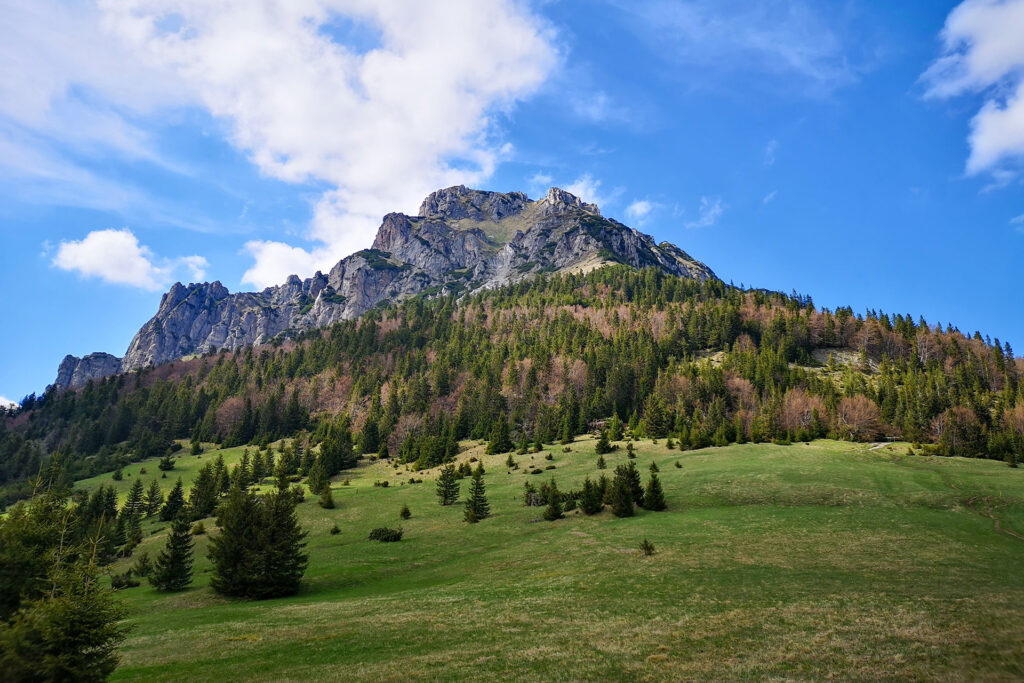Total LIFE eligible project budget: 16,622,242€
EC LIFE financial contribution requested: 9,973,345€ (= 60% of total eligible budget)
Duration of the project: 01.01.2021 – 31.12.2030
Grant Agreement: CRZ
The LIFE IP NATURA 2000 project (full project title: Role of the Natura 2000 network and management of some prioritized habitats in the integrated landscape protection of the Slovak Republic) focuses mainly on the implementation of the Prioritised Action Framework (PAF) for Natura 2000 in Slovak Republic for the 2021-2027 period.
Prioritised Action Framework (PAF) is a strategic planning tool for 2021-2027 period, whose main objective is to give more complex overview of the measures and financial resources needed for the support of Natura 2000 network and associated green infrastructure. It is focused on the identification of actions that are directly connected with specific conservation measures established for Natura 2000 network locations. These actions are set to reach conservation targets for chosen species and habitats, that were determined as protected on the site level.
The main objective of the LIFE Integrated Project is implementation of the PAF for Natura 2000 network in Slovakia 2021 – 2027, pursuant to Article 8 of the Habitats Directive 92/43/EEC. This goal shall enable us to achieve the Target 1 of the EU Biodiversity Strategy and general objectives of the EU Habitats and Birds Directives, with respect to the contribution towards improving conservation status of some specific and prioritised species and habitat types and may include also broader actions in the field of green infrastructure that contribute to better coherence of Natura 2000 network in a wider and cross-border context.
Specific objectives to be guaranteed by the project include:
- Ensure that conservation targets and management of Natura 2000 sites are set on a basis of sound data; and that existing data and methodological gaps in Natura 2000 sites management are filled,
- Ensure that assessment of management effectiveness of measures and interventions is executed in Natura 2000 network,
- Increase effectiveness and sufficiency of the monitoring system that provides data on biogeographical level for reporting,
- Assess impacts of climate change on Natura 2000 network and propose mitigation measures and policy/management recommendations,
- Coherence of Natura 2000 network is ensured through identifying ecological connectivity elements (ecological corridors, stepping stone habitats…) and applying measures for their protection through relevant policies and instruments,
- Ensure conservation of chosen habitats (peatlands, meadows, etc.) through development of specialized management and restoration plans, its implementation and assessment,
- Establish, test and evaluate agroforestry systems with demonstration character that would support threatened species and habitat types,
- Restore habitats and implement specialised and integrated nature conservation and landscape management for selected highly threatened species (Tetrao Urogallus, Pseudogaurotina Excellens, Emys Orbicularis, Thesium Ebracteatum andMarsilea Quadrifolia),
- Evaluate effectiveness and replicate experience and knowledge from demonstration sites through existing and new policy instruments including providing recommendations for EU funds programming,
- Improve awareness and public acceptance of Natura 2000 among stakeholders and general public including awareness on ecosystem services provided by Natura 2000.
Project activities are divided into five actions:
- Preparatory actionsthat aim to prepare technical documentation, studies, integrated management plans, or prepare strategies for communication and engagement of involved parties and public,
- Specific nature preservation actionsthat would among other objectives aim for effectiveness of management measures and improvement of connectivity on Natura 2000 sites; monitoring and assessment of targeted species and habitats on the site level of Natura 2000 network and an assessment of their potential vulnerability (or resilience) towards climate change effects; probably the most important activity here is implementation of concrete conservation actions in project’s demonstration sites and development of new management approaches to restoration and protection,
- Monitoringwill focus on the implementation of PAF; monitoring and evaluation of the key project indicators; socio- economic effects of the project; the impact of concrete conservation actions will be continuously monitored in order to analyse the effectiveness of implemented measures towards targeted species and habitats types,
- Public awareness about Natura 2000 and dissemination of the Project’s resultsis one of the key activities for LIFE IP NATURA 2000. Project focuses on information propagation and raising of the awareness of general public about Natura 2000; environmental education towards Natura 2000; and communication and spreading of the project’s results as well as networking with other projects,
- Project management and monitoring of project’s progressand preparation of the After-LIFE plan.
Some of the most interesting activities of the project will include:
- Spreading and replication of the knowledge (new techniques, for example agroforestry; and new environmental management styles) to new habitat locations through links in-between separate departments and other entities,
- Better integration of nature and biodiversity protection targets into Strategic Agricultural Plan,
- Implementation of specific conservational actions in demonstration sites and development of new managerial approaches through integrated land management including additional biotopes and species in the future,
- New approaches to communication where cooperation of the various specialists and coordinating entities will work together on project’s locations,
- Introduction of the “best practice” actions (for example, re-introduction of the peatlands management, clearing/planting of vegetation, river bank management, etc.),
- New approach to monitoring and effectiveness assessment, with focus not only on common biological and socio-economic factors, but also economical and technical effectiveness of used monitoring methods,
- Assessment of the state of conservation on the local level,
- Mitigation of the climate changes to Natura 2000 network,
- Establishment of the new Peatland Management Centre; Agroforestry approach to forest management, etc.
The project will take place in the following locations:
- Peatlands of north and central part of Slovakia: is comprised of peatlands and bottomland forests and biotopes of national importance. The biodiversity in this location is very high aside from peatlands and forests one may find here meadows and grazing biotopes as well as significant plant and animal species. The project activities here include, but are not limited to cutting of the grass, clearing of bushes and trees, or mulching of biomass in order to identify the best approach to peatlands management. The focus will also be on improvement of the communication and discussion with land-owners and land-users in order to ensure long-term sustainability of the areas in focus and their potential further restoration;
- Záhorie: its southern part is mostly flat, to the North and East it raises and it closer resembles hilly areas. Frequent flooding and sustainable human use resulted into floodplain grassland ecosystems and these biotopes are considered the most valuable landscape element. Equally valuable are floodplain forests near watercourses especially Moravia river. The project activities will predominantly focus on introduction of agroforestry systems, clearing of bushes and trees, or setting up of grasslands designated for grazing. Water management activities will include renewal of river-banks and adjoining areas and re-connection of selected river meanders.
- Muránska planina: is very diverse area with rich biodiversity. Predominantly one may find here forests and grasslands and less of water and water-banks ecosystems. Activities here will be mainly oriented on forest management close to nature, with special focus on enhancing of the environment for Tetrao Urogallus. This will include reduction of forest density, reduction of the game etc. Restoration and maintenance of semi-natural grasslands will also be part of the project activities.
- Poľana: is known for its high diversity of fauna and flora and one may find here 15 habitats of Community Interest according to the Habitats Directive (92/43/EEC). In the project location there are mainly mountain hay meadows, transition mires and quaking bogs, various types of forests, cultivated meadows in the South, grazing lands and old orchards and arable land. The project activities in this locality will include but won’t be limited to renewal of the mountain meadows, young forests management with regard for appropriate structure and diversity of the forests. In the affected areas the emphasis will be on improvement of the Tetrao Urogallus habitats as well as endemic species Thesium Ebracteatum.
- Latorica: represents mosaic of floodplain forests, wetlands, oxbow lakes and floodplain meadows in the Latorica river alluvium and Bodrog River. There are 16 habitats of Community interest according to Habitats Directive (92/43/EEC) with plenty of rare fauna and flora. One of the most important project activities in this location will be construction of the canal for water supply into isolated oxbow lake Tajba on the Bodrog River. Activities will also include restoration of the grasslands through clearing of forest cover on the selected locations.





